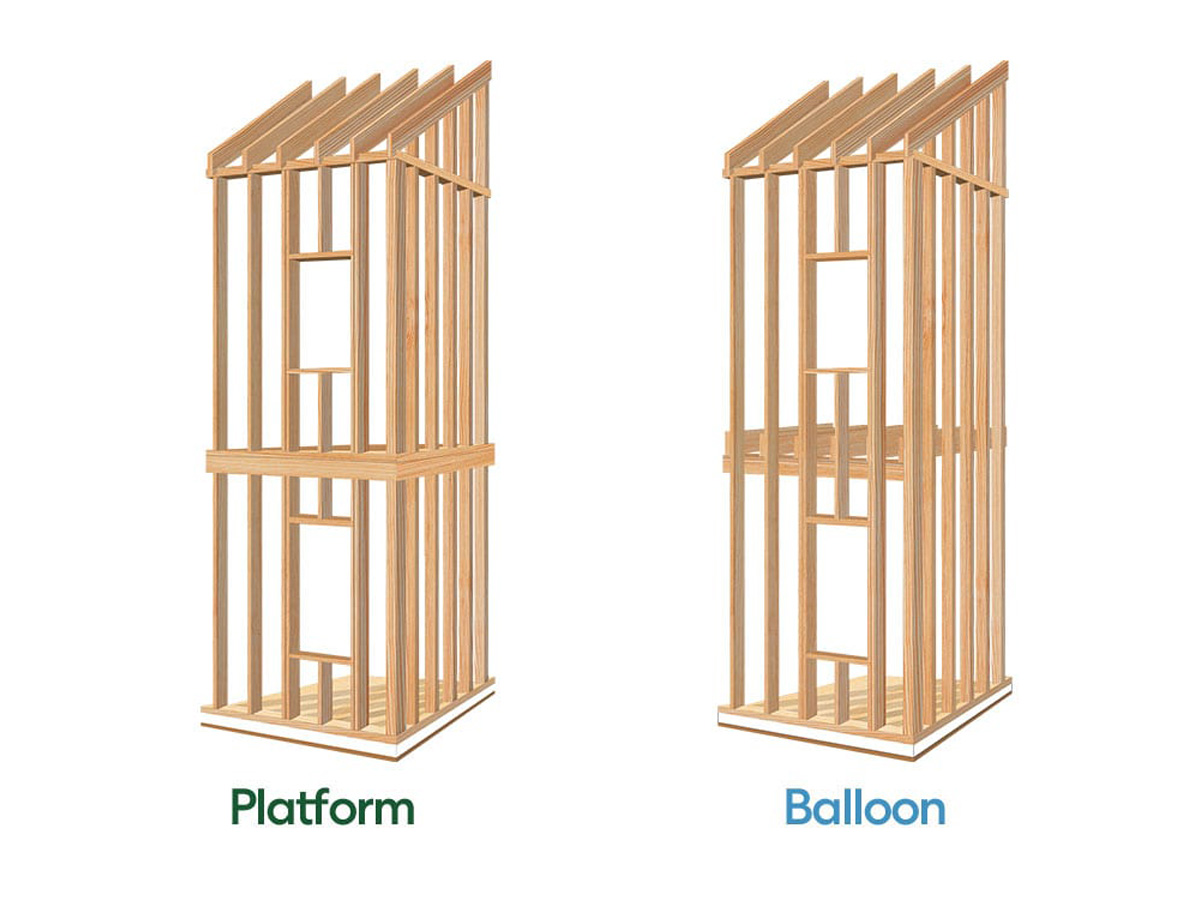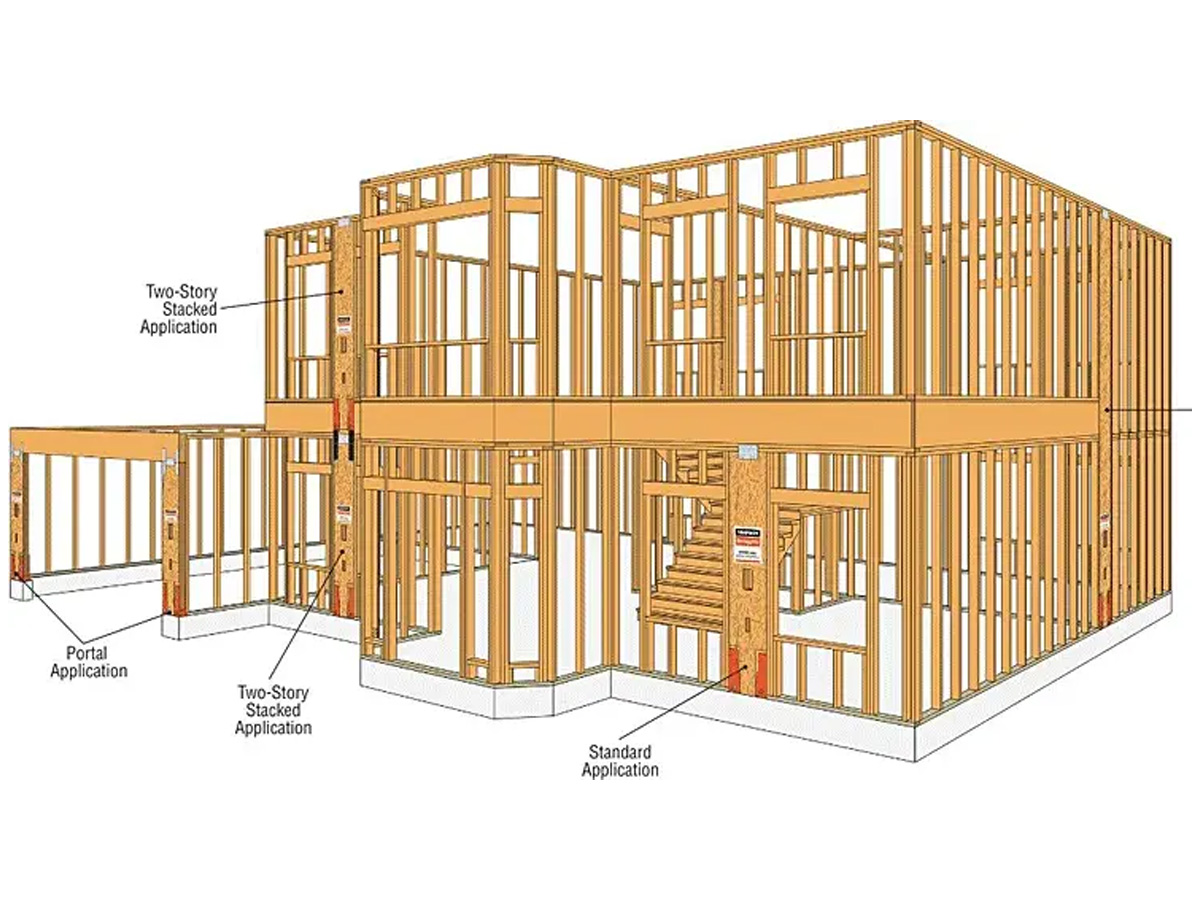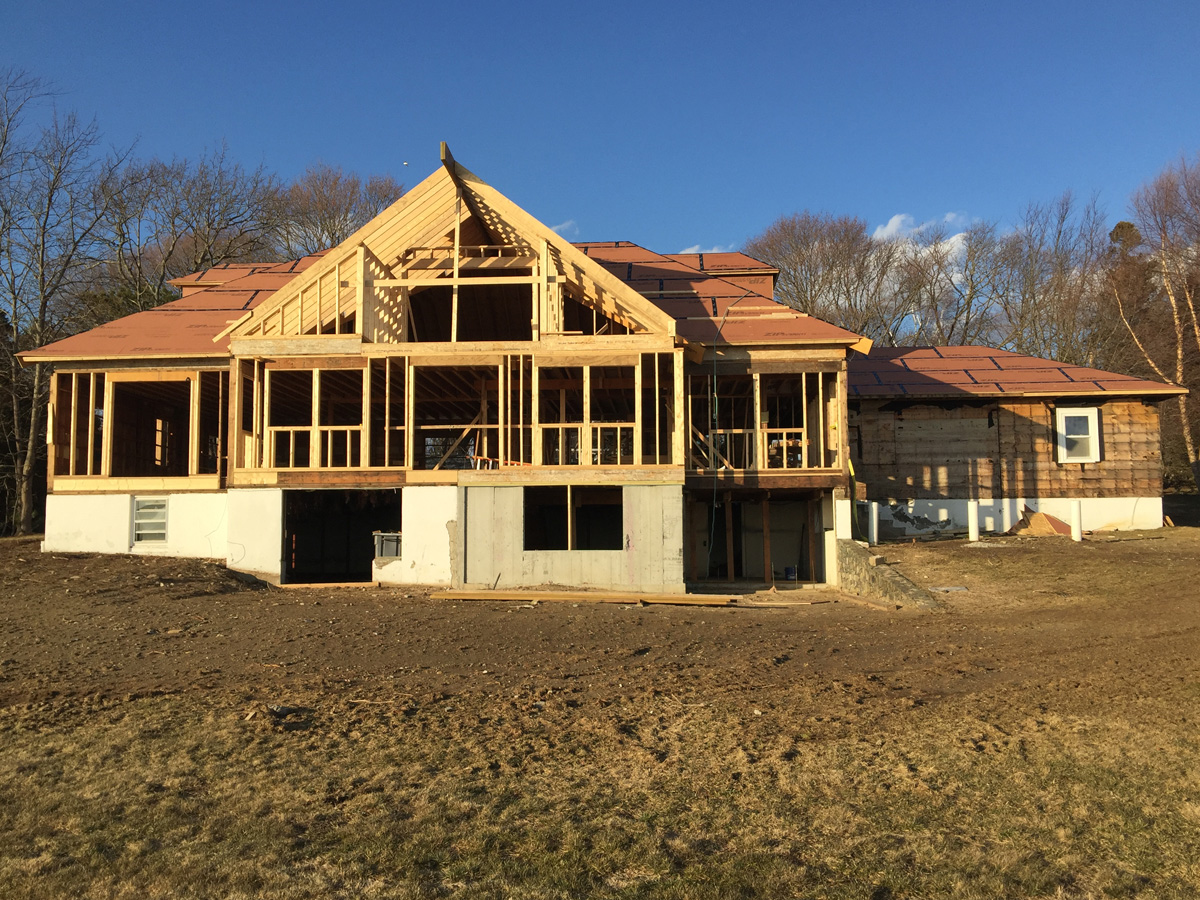The United States construction industry and homeowners benefit from being on a continent that is rich is forests and wood resources. As a result, the vast majority of houses have been built not in stone or adobe brick, but from wood “stick framing” with a cladding of wood clapboard or shingle on the exterior. The evolution of American residential construction has been significantly influenced by two primary framing methods through the years: “balloon framing” and “platform framing.” These methods have shaped the character of countless structures across the country, each offering distinct advantages and disadvantages at the time of their invention and common use.

Balloon vs Platform Framing
Balloon framing emerged in the early to mid-19th century as a response to the need for faster and more efficient construction methods from the post and beam systems that dominated during the American Colonial Era. In this technique, vertical studs cut at a lumber mill are continuous from the foundation to the roof. This creates a framework that resembles a balloon in that it is hollow on the interior until floors are hung from the framework. Horizontal boards, known as “diagonals,” are nailed to the studs to provide lateral stability. Balloon framing was particularly popular during the Victorian Era, as it allowed for rapid construction of structures. Each wall could be built on the ground and then tipped up into a vertical position, making the process relatively easy and fast to execute, particularly with box-like buildings with rectangular floor plans.
Platform framing, on the other hand, gained prominence in the late 19th century. In this method, the building is constructed one floor at a time with each floor acting as a platform for the next. Studs are cut to the desired height for each floor, and horizontal boards are used to create a platform. This method offered several advantages over balloon framing including greater stability, easier access to interior spaces during construction, and the ability to build far more complicated floor plans.

Balloon vs Platform Framing Connections
One of the key differences between balloon framing and platform framing lies in structural integrity. Balloon framing, while efficient, can be susceptible to fire spreading vertically through the continuous studs. This vulnerability led to numerous devastating fires in cities built with balloon-framed structures. Platform framing, with its floor-by-floor construction, helps to contain fires longer to individual floors.
Another significant difference is the ease of construction. Platform framing generally requires less skilled labor than balloon framing. The modular nature of platform construction allows for more efficient assembly and reduces the need for complex joinery techniques. Additionally, platform framing offers greater flexibility in terms of design and customization, as it allows for easier modifications to floor plans and interior layouts, but perhaps the main benefit of platform framing was to prevent the easy spread of fire from one level to another through the hollow wall spaces that exists within the balloon frame system.

Example of Platform Framed Structure
Despite the many advantages of platform framing, balloon framing remains in use in some regions, particularly in areas with a long history of construction practices. Balloon-framed structures can be found in historic neighborhoods and rural areas, where traditional methods continue to be employed. However, platform framing has become the dominant method for residential construction in the United States due to its advantages.
Balloon framing and platform framing have played crucial roles in the development of American residential architecture. While balloon framing was an innovation in fast and efficient construction, platform framing has emerged as the generally preferred method due to its structural integrity, ease of construction, design flexibility, and fire-resistance. The choice between these two methods has shaped the character of countless buildings across the country, reflecting the evolving needs and preferences of American society. Today, new panelized systems and modular systems of construction are being developed that may someday supersede the current “stick built” framing systems that remain so common even more than 100 years after their first invention and implementation.

A4 Project Example that utilized Platform Framing
Ross Sinclair Cann, AIA is a historian, educator and practicing architect. He is the Founding Principal of A4 Architecture in Newport, Rhode Island and holds architecture degrees from Yale, Cambridge and Columbia Universities.
